Sonic Origins: Glitches and a high price make it difficult for us to recommend it
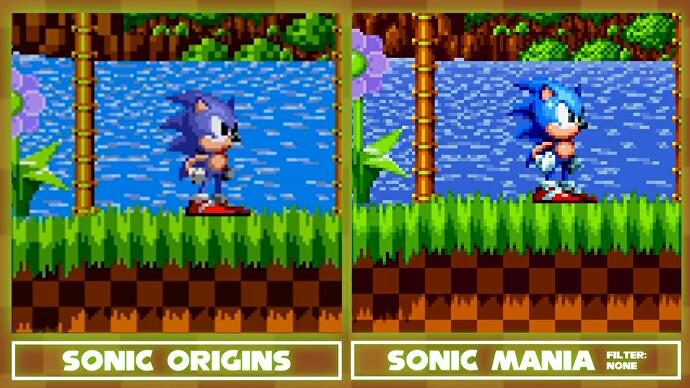
The original 16-bit adventures of Sonic the Hedgehog are considered some of the best games in Sonic history, and to me, some of the best games ever made. They have been re-released many times since their original appearance, but mostly they were little more than emulators paired with original ROMs. However, Sonic Origins is different: it’s a completely remastered version of the original 16-bit games, using the Retro engine, the same technology that powered the brilliant Sonic Mania. This version even includes Sonic 3 & Knuckles, a rarity, making Sonic Origins one of the most exciting Sonic releases in a long time. So Sonic Origins has a lot going for it, but there’s always potential for trouble. Unfortunately, Origins has quite a few.
Sonic Origins reminds me of Sonic Jam for the Sega Saturn. It was the first full collection to port each of the original Mega Drive games to a new platform, with a huge range of bonus material such as videos, music and illustrations. So this is basically Sonic Jam 2 – all 16-bit games plus Sonic CD, surrounded by a wide range of bonus material and alternative game modes that expand on this formula.
To explore this material, one travels across six islands: four of which represent the main games in the pack, while the others offer bonus features such as a film gallery, illustrations and a comprehensive jukebox. The entire front end was developed using Sonic Team’s proprietary Hedgehog engine, the same engine used in games like Sonic Forces and Sonic Generations. When you launch any of the games, the games powered by the Retro engine will appear as a skin on the game’s UI. An approach we’ve seen in numerous other retro collections, but in this case there are downsides as well.
The first and biggest problem that emerges is that the games are rendered on screen using a bilinear filter, resulting in softened pixel edges. Sonic Mania offers four display options to solve this, including two CRT filters and a sharpness option. However, these options are not included in Origins and the reduced clarity of the image is evident. There is an option labeled “Anti-Aliasing”. presentbut this further degrades the image quality, resulting in an unacceptably blurry display.
The other major shortcoming of the front end is evident in the Switch version. There’s just a 30fps presentation and blurry image quality here, a far cry from the 60fps 4K on PS5 or Series X. Menu navigation on the Switch is less fluid, with everything feeling sluggish and blurry. Some of the beautiful animated videos included here are also scaled incorrectly on the Switch, which is a shame.

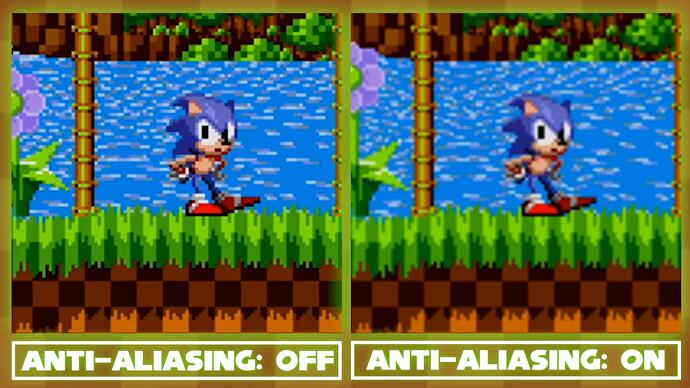
There are other problems too. There are typos in the music list, wrong track names and the overall volume is way too low – yet the Sonic CD video clips are noticeably louder than anything else in the game. Sonic CD also hides options like the soundtrack selection in its own menu that appears to have been carried over from the original 2011 version of the game, so it feels inconsistent. So while the UI is attractive, there are glaring bugs that should have been fixed upon release. The only good news is that the modding community has already fixed the biggest problem by restoring Sonic Mania’s display options if you’re playing on PC. We can only hope that Sonic Team will listen to this feedback and fix the issues in a future patch for the console versions.
Thankfully the games themselves are the main attraction and are generally rendered to a high standard using the retro engine. Native 16:9 aspect ratios are supported, with increased view distance and modified boss fights. Fixed slowdowns, which was a recurring issue on the original hardware. Instead, Sonic is rendered at a stable 60 fps. Bonus and special levels also look smoother, scattered rings are faded out with alpha blending, and the soundtrack for the first two games has been remastered with cleaner audio. There’s also new content: the Hidden Palace Zone in Sonic 2’s Mystic Cave Zone is now a proper bonus stage, replicating the look of the previously unfinished level.
While the earlier games are great, Sonic 3 & Knuckles is the biggest addition to this pack as it was previously Not got a retro engine conversion. On the surface it is a solid port with many new features. The closer you look, the more small updates you’ll notice that make the game look better than ever, from updated on-screen water effects to extra animation frames for bonus rings. Objects that rely on rotation, such as Features such as lianas and ziplines have been updated with true per-pixel rotation, allowing for smoother movement, while the Blue Sphere special stages have been updated to match Sonic Mania, resulting in dramatically smoother animations. There are many other small tweaks and changes that make the game feel carefully overhauled despite a few issues that we’ll get to shortly.
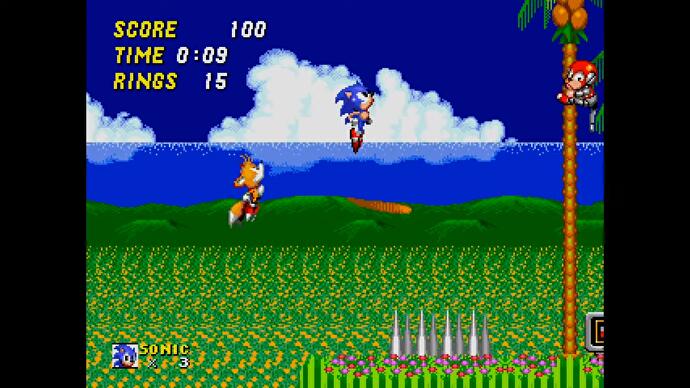
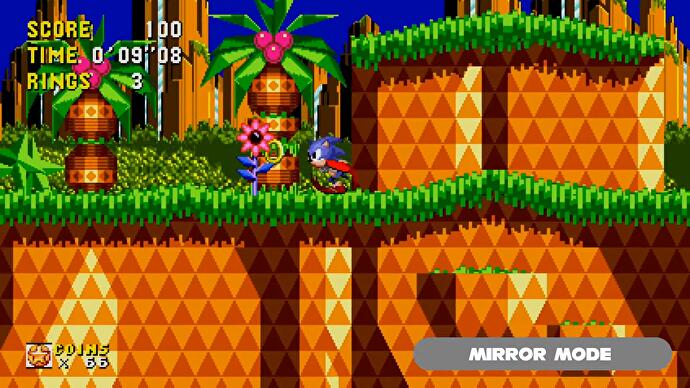
One of the most important changes concerns the music. Much of the original Sonic 3 soundtrack was apparently created in collaboration with Michael Jackson and Brad Buxer, but this created problems that prevented Sonic 3 from being re-released for years. The solution to this problem for the new version is to replace these tracks with music first found in a prototype version of Sonic 3. These tracks were later used in the PC port of Sonic 3 & Knuckles where they were rearranged as MIDI tracks, now they have been recreated for Sonic Origins. In my opinion, the new arrangements are a step backwards from those used in the prototype version of Sonic 3, but they’re still usable. However, the music in Sonic 3 & Knuckles sounds dull compared to the remastered tracks in the retro engine conversions of Sonic 1 and 2, which is disappointing.
Aside from the sound, however, all of these ports have received additional gameplay features. The drop dash move from Sonic Mania is included, although its implementation isn’t quite on par, mission, combo and mirror modes are also available. There are other minor gameplay changes as well, but nothing as significant as the easy and normal modes in Sonic Jam on the Sega Saturn, where things like spikes and enemies have been changed. There’s also a classic mode where you get a fixed 4:3 aspect ratio and the old life system, but you can’t have one without the other.
So apart from the bilinear filtering everything seems to be pretty good, but unfortunately Origins has some bugs. While most aren’t game-changing, the sheer number of them detracts from the overall experience. For example, in Sonic 2, Tails gets stuck while traversing the level and you can hear the sound effect of him jumping that repeats indefinitely. A massive annoyance. In Sonic 3, the arrival of the third stage mid-boss will cause debris to fall off the screen, which will last until you die or enter a special stage, rather than stopping when the boss is defeated. Later in the Marble Garden Zone, it’s possible to go out of sight and die. I could go on, but the point is that this game doesn’t have the polish that we’ve seen in other retro engine projects.
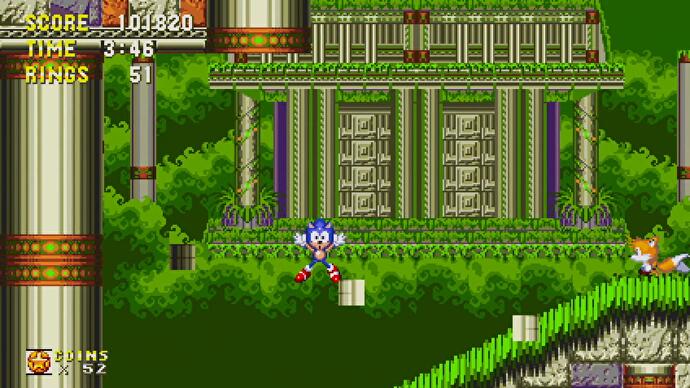
What does all of this tell us in the end? On the one hand, the bugs and rendering issues are frustrating, it feels unfinished in a way that’s hard to ignore. Still, these are full retro engine ports of the classic Sonic games, making them one of the most interesting re-releases. Personally, I’m not a fan of emulations in this case, as I’ll always go for the original cartridge versions, but the wider aspect ratio, improved special stages, and bonus content make for a good time, not to mention a lot low input lag.
If Sonic Team can solve these technical problems, Origins would be easy to recommend, but with its bugs and high price it’s rather difficult at the moment. I really feel like Sega needs to slow down a bit. The last three retro reboots all shipped with technical issues that should have been fixed before release. With products like this, they risk alienating their customers. I hope they start to understand this before it’s too late. Sonic Origins could have been the best compilation yet, but it looks like there’s still work to be done.
![]()
Originally written by John Linneman, Senior Staff Writer, Digital Foundry
Reference-www.eurogamer.de